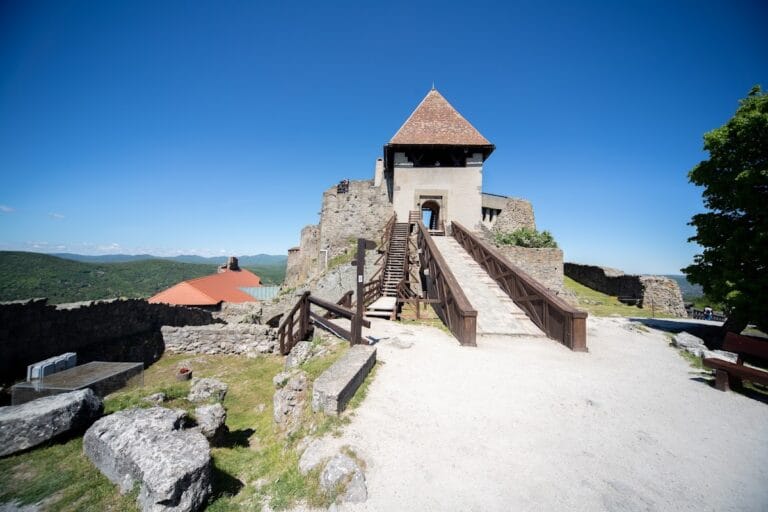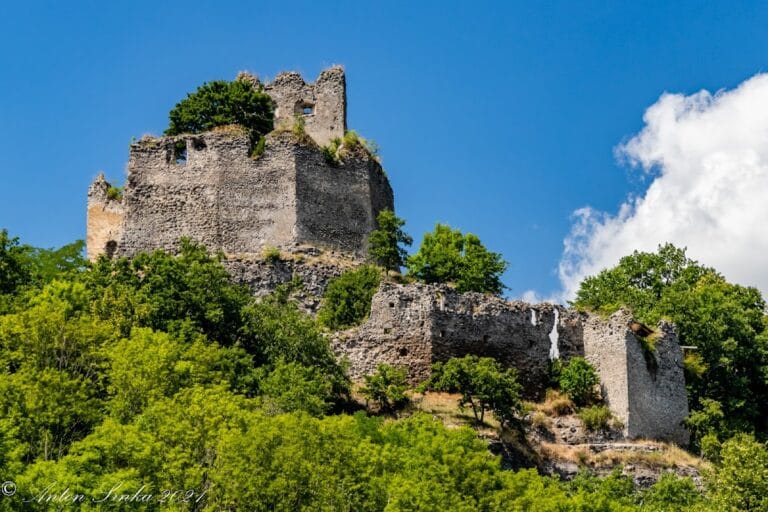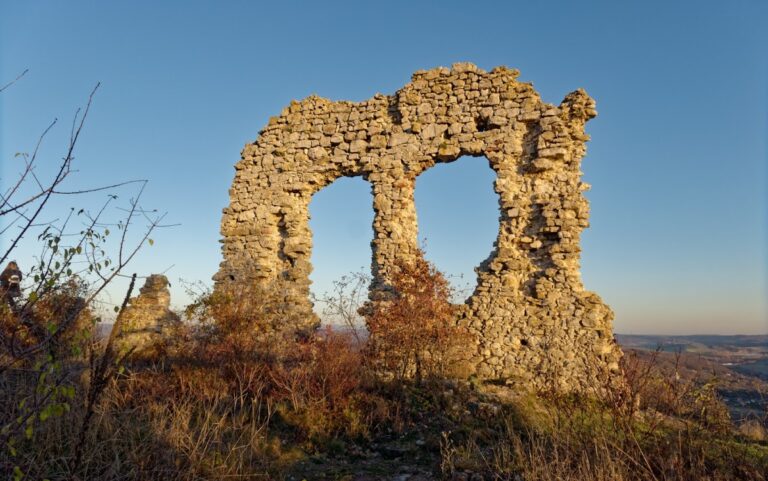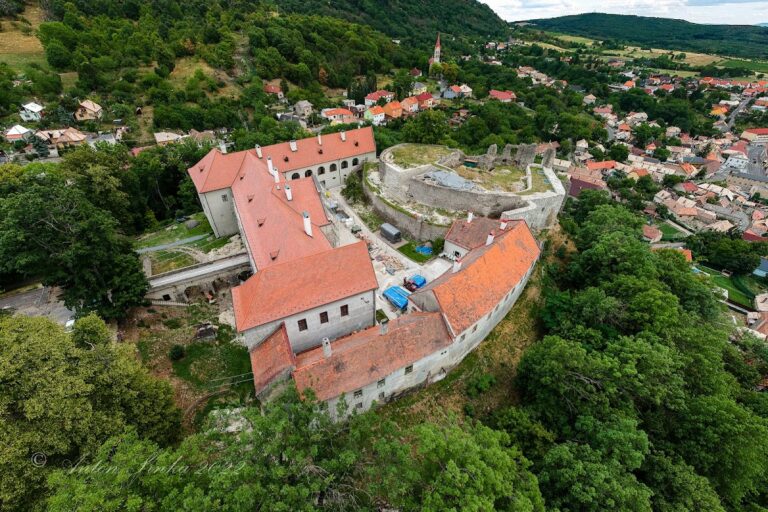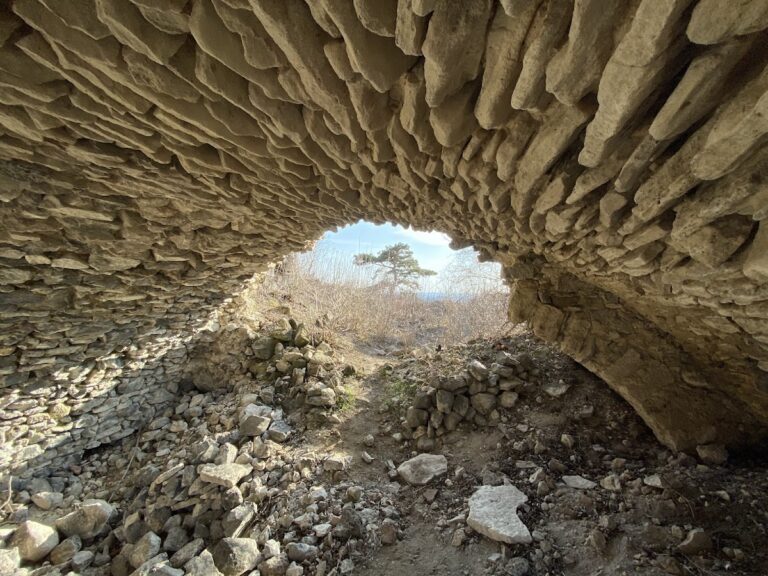Drégely Castle: A Medieval Fortress in Hungary
Visitor Information
Google Rating: 4.8
Popularity: Medium
Google Maps: View on Google Maps
Country: Hungary
Civilization: Unclassified
Remains: Military
History
Drégely Castle is located near the village of Drégelypalánk in modern-day Hungary. It was built during the 13th century by the medieval Kingdom of Hungary, likely under the direction of the Hunt-Poznan (Hontpázmány) family, who owned the surrounding lands at the time.
The earliest record of the castle dates back to 1285, identifying Demeter of the Hunt-Poznan family as its resident noble. In the early 1300s, the castle fell under the influence of Máté Csák III, a powerful regional lord or oligarch. After his death in 1321, control reverted to the Hungarian crown. For a time, Drégely Castle served administrative functions such as housing the county dungeon and archive of Hont County. In 1390, King Sigismund granted the castle to László Tari for his loyal support during the king’s struggles for power. However, the Tari family’s harsh governance led to the crown reclaiming the fortress.
From 1438 onward, the castle came into the possession of the Archbishop of Esztergom, who converted it into a comfortable hunting retreat. Following the Ottoman Empire’s capture of nearby Buda in 1541, Drégely Castle gained military significance as a frontier fortress defending northern mining towns and securing the kingdom’s northern border.
In 1544, Archbishop Pál Várday appointed György Szondy as castellan. Szondy worked to strengthen the castle despite its old and limited defenses. In July 1552, the fortress faced a major Ottoman siege led by Ali Pasha of Buda, who commanded some 12,000 troops against a small garrison of roughly 146 defenders. After intense artillery bombardment and repeated frontal assaults lasting three days, the castle’s gate tower collapsed. The defenders retreated to the inner stone stronghold but were ultimately overwhelmed in close combat. Szondy and nearly all of his men died defending the position with great bravery.
The Ottomans repaired and used Drégely Castle as a military outpost until 1593. After that date, it gradually lost its role and was abandoned by the late 1600s. Nearby, in 1575, the Ottomans constructed a wooden palisade fort named Bügürdelen to guard a crossing over the Ipoly River. This smaller fort served both Ottoman and later Hungarian forces until the end of the 17th century.
Beginning in the 18th century, Drégely Castle slowly deteriorated. Archaeological study and preservation efforts did not begin until the late 20th century, spearheaded by local groups. Restoration programs have continued into the 21st century, aiming to stabilize and partially reconstruct the surviving ruins.
Remains
Drégely Castle sits atop a volcanic rock peak rising around 440 meters above sea level in the Börzsöny Mountains. The fortress was originally designed as a small hilltop stronghold, comprising two main parts: an outer wooden palisade forming the lower castle, and an inner stone fortress located on the rocky summit, known as the upper castle.
The lower castle was enclosed by timber palisades, which served as the first line of defense. During the Ottoman siege of 1552, these wooden fortifications were burned down, forcing the defenders to withdraw into the sturdier stone upper castle. The inner fortress walls were constructed from locally sourced stone, providing a tougher barrier against attackers.
One of the castle’s key defensive features was its gate tower, which was subjected to heavy artillery bombardment during the same siege. Ottoman cannon fire destroyed the tower after two days of shelling, leading to the collapse of the main entrance. The ruins of this upper castle are still visible today and have been partly stabilized and rebuilt through modern conservation efforts.
Due to centuries of decay and overgrowth, the precise layout of the outer wooden palisade is difficult to reconstruct. However, archaeological work has focused on preserving the remaining stone structures of the inner castle. Restoration projects in recent decades have involved rebuilding over a thousand cubic meters of masonry, ensuring the walls remain standing and accessible on-site.
The castle’s location within the Danube-Ipoly National Park makes it accessible only by foot along forest trails from nearby villages. The closest railway access point is at Drégelyvár station on the Vác–Balassagyarmat line. Today, the ruins stand as a testament to medieval military architecture and the region’s turbulent history, with partial reconstructions providing insight into the castle’s original defensive design.






